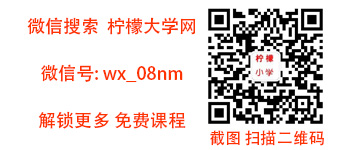
当前课程知识点:国际商务 > 十、国际商务组织 > 10.3战略与组织构架 > 战略与组织构架
同学们好
Hello everyone
我是云南财经大学国际工商学院的潘雪冬老师
I am Pan Xuedong from International Business School of Yunnan University of Finance & Economics
这节课我们继续学习国际企业组织的战略与组织构架
Today we are continuing to study the strategy and architecture of international businesses
首先我们来回顾一下跨国公司的战略
Let’s review the strategies of multinational enterprises
1.本土化战略
localization
2.国际战略
international
3.全球标准化战略
global
4.跨国战略
and transnational
接下来
Next
我们学习战略与组织架构的关系
let’s study the relationship of strategy and architecture
实行本土化战略的公司关注地区调适
Firms pursuing a localization strategy focus on local responsiveness
这样的公司倾向于采用世界范围的地区结构
Such firms tend to operate with worldwide area structures
经营决策权下放给独立运行的国外子公司 各子单位间的协调需求低
operating decisions are decentralized to functionally self-contained country subsidiaries
对整合机制的需求也不强烈
Firms do not have a high need for integrating mechanisms
因此对共同流程和组织文化的需求也十分低
since the need for common processes and organizational culture is also quite low
实行国际战略的公司
Firms pursuing an international strategy
通过把核心竞争力从母国转移至国外子公司来创造价值
attempt to create value by transferring core competencies from home to foreign subsidiaries
采用世界范围的产品分部结构
Firms pursuing a worldwide product division
总部通常集中控制公司的核心竞争力资源
headquarters normally maintains centralized control over the source of the firm’s core competency
这些资源大多数来自研发部门和营销职能部门
These resources most typically came from in the R&D and marketing functions of the firm
其他经营决策权则下放给各国分支单位
other operating decisions are decentralized within the firms to subsidiary operations in each country
这些公司对协调的需求处于中等水平
The need for coordination is moderate in such firms
整合机制没有广泛使用
and integrating mechanisms are not extensive
由于部门间的依赖程度不高
The relatively low level of interdependence that
绩效模糊性也相对较低
results translates into a relatively low level of performance ambiguity
因此这些公司通常采用产出控制和行政组织控制
These firms generally use output and bureaucratic controls
奖励重点针对子公司层面的绩效水平
and with incentives that are focused on performance metrics at the level of country subsidiaries
实行全球标准化战略的公司多数为产品多样化公司
Firms pursuing a global standardization strategy are mostly diversified
一般采用世界范围的产品分部结构
these firms often use a worldwide product division structure
为了协调公司分散在全球的价值创造活动网
To coordinate the firm’s globally dispersed web of value creation activities
总部通常保留大多数经营决策的最终控制权
headquarters typically maintains ultimate control over most operating decisions
这些公司的集权程度比多数其他类型的公司要高
Such firms are more centralized than enterprises pursuing other strategies
公司的整合要求也较高
the need for integration in these firms also is high
一般采用正式和非正式的整合机制
These firms tend to operate with formal and informal integrating mechanisms
导致较高的绩效模糊性
leading to significant performance ambiguities
除了使用产出控制和行政组织控制
In addition to output and bureaucratic controls
还强调建设强势的组织文化
firms pursuing a global standardization strategy tend to stress the need to build a strong organizational culture
以促进协调与合作
that can facilitate coordination and cooperation
实行跨国战略的公司大多采取矩阵结构
Firms pursuing a transnational strategy may operate with matrix structures
其中产品分部和区域分部都有重大影响力
in which both product divisions and geographic areas have significant influence
为了协调全球分布的价值链
In order to coordinate a globally dispersed value chain
实现核心竞争力转移 会集中生产和研发的决策权
and to transfer core competencies creates pressures for centralizing some operating decisions
与此同时
At the same time
地区调适又需要向各国营运点分散营销决策权
the local responsive creates pressures for decentralizing other operating decisions to national operations
所以
Consequently
这些公司既要高度集中某些经营决策权
these firms tend to mix relatively high degrees of centralization for some operating decisions
又要高度分散某些经营决策
with relative high degrees of decentralization for other operating decisions
跨国公司对协调的需求水平特别高
The need for coordination is high in transnational firms
采用正式和非正式的整合机制
in which formal and informal integrating mechanisms used
部门间的依赖程度很高
The high level of interdependence can
导致显著的绩效模糊
result in significant performance ambiguities
除了采用产出控制和行政组织控制外
In addition to output and bureaucratic controls
还需要培养强势的组织文化和奖励机制
firms need to cultivate a strong culture and to establish incentive
公司要取得高绩效就必须使其战略和组织构架相适应
A “fit” between strategy and architecture is necessary for a firm to achieve high performance
公司要获得成功
For a firm to succeed
必须满足两个条件
two conditions must be fulfilled
首先
First
公司的战略必须与公司的经营环境相一致
the firm’s strategy must be consistent with the operating environment
例如
For example
某些行业中实行全球标准化战略最可行
in some industries a global standardization strategy is most viable
另一些行业中国际或跨国战略最可行
In others an international or transnational strategy may be most viable
其次
Second
公司的组织构架必须与其战略相一致
the firm’s organizational architecture must be consistent with its strategy
如果战略与环境不适应
If the strategy does not fit the environment
公司业绩就有可能遭遇重大问题
the firm is likely to experience significant performance problems
如果组织构架与战略不适应
If the architecture does not fit the strategy
公司业绩也会遇到问题
I the firm is also likely to experience performance problems
这一节的内容就是这些
That’s all for today
感谢大家的参与
and thank you for your participation
-1.1 全球化的概念和内容
-1.2 全球机构和全球化的推动力
-1.3 全球经济的变化和逆全球化的动因与现象
-第一章课后练习
-2.1 政治体制
--政治体制
-2.2 经济体制
--经济体制
-2.3 法律体系
--法律体系
-2.4 经济发展的决定因素
-2.5 经济转型的本质和经济变革的意义
-第二章课后练习
-3.1 跨文化差异的本质和影响因素
-3.2 跨文化差异的影响因素、文化维度和文化演进
-3.3 商务伦理问题的本质、起因和哲学路径
-第三章课后练习
-4.1区域经济一体化的概念及层次
-4.2区域经济一体化的争论
-第四章课后练习
-5.1国际贸易理论
--国际贸易理论
-第五章课后练习
-6.1国家干预国际贸易的原因
-6.2国家干预国际贸易的措施
-第六章课后练习
-7.1投资的现状
--投资的现状
-7.2投资的理论
--投资的理论
-7.3投资利弊与政府干预
-第七章课后练习
-8.1外汇市场
--外汇市场
--外汇市场案例学习
--外汇市场案例分析
-8.2货币体系
--货币体系
-8.3全球资本市场
--全球资本市场
-第八章课后练习
-9.1国际企业的战略
--国际企业的战略
-9.2战略目标
--战略目标
-9.3环境压力
--环境压力
-9.4战略选择
--战略选择
-第九章课后练习
-10.1组织构架与组织结构
-10.2控制、奖励、流程与文化
-10.3战略与组织构架
--战略与组织构架
-10.4组织变革
--组织变革
-第十章课后练习
-11.1市场进入战略
--市场进入战略
-11.2战略联盟
--战略联盟
-第十一章课后练习
-12.1进出口贸易与对等贸易
-第十二章课后练习
-13.1产品策略和分销策略
-13.2沟通策略、定价策略和新产品研发
-第十三章课后练习
-14.1全球生产与供应链管理
-第十四章课后练习
-15.1国际人力资源管理的作用
-15.2人员配备、培训与管理
-15.3业绩评估与薪酬
--业绩评估与薪酬
-15.4国际劳工关系
--国际劳工关系
-第十五章课后练习
-16.1国际会计
--国际会计
-16.2国际企业财务管理
--国际企业财务管理
-第十六章课后练习